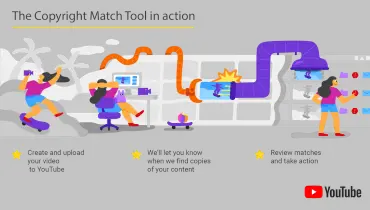3 Core Rules of Web Writing to Remember Always

Dr Jakob Nielsen, one of the most influential researchers into web reading behavior, and Stanford University/Poynter Institute have conducted many usability studies over the years that have helped us understand more about how people interact with information published online.
Among the most fascinating studies for web writers and publishers is the Poynter Institute’s eye tracking studies. The eye tracking report boils down to a few important facts that many of us perhaps already knew, but just lacked scientific evidence to prove:
- Web users generally ignore extraneous graphics.
- 79% of users scan the page instead of reading word for word, focusing on headlines, summaries, and captions.
- Web readers are three times more likely than newspaper readers to limit in-depth reading to short paragraphs.
- Of those web users who do read the entire page, most only absorb 75% of the content.
Reading copy from a screen is not easy on the eyes. Web readers don’t move their eyes from left to right across the screen when reading like you would expect. They sweep their eyes horizontally across the page, starting in the upper left corner, then swipe vertically down the left, briefly stopping and scanning interesting text, before moving forward to new pages or going back over the text they’ve already scanned. The resultant eye movement pattern for reading web content roughly resembles an F.
![]()
The F-shaped pattern for reading web content from Jakob Nielsen’s eye tracking studies. Notice the F? It’s especially visible in the center picture of the three eye movement heatmaps.
Fundamental Rules of Web Writing
It takes time and commitment to read content on the web. As a web content writer, you need to acknowledge this fact, empathize with readers, and obey three core rules of web content writing upon which all other rules anchor:
Rule #1: Know Your Audience
Don’t start to write until you know who you are writing for. Find out who your core audience is first. This will help you internalize and appreciate that you are writing for real people and not an abstract, obscure audience. Even if you feel like your article/story has a very broad potential audience, it cannot be universal. Ask yourself basic questions to fully understand your audience:
- Who am I writing this for?
- What problem do they have?
- How much do they already know about the topic?
- Where are they located in the world?
- What gender are they?
- How old are they?
- What is their occupation?
- What common life situations do they have? For example, are they work-at-home moms, single Christian women or over forty and unmarried men?
Rule #2: Be Yourself
Being yourself, you won’t write dull, generic texts. You won’t try to be unnecessarily clever or aim to please everyone. You will write naturally such that your target audience enjoys reading your work, derives real value from your words and reacts appropriately to your piece.
- Choose topics that you actually care about.
- Express your attitudes and opinions freely, genuinely and boldly.
- Write in your own distinct style.
- Be interesting, perhaps even edgy.
- Most of all, be authentically real.
Rule #3: Keep it Short and Sweet (KISS)
No matter how complex your subject is, deliver your message in the most direct, concise and interesting way possible. Don’t assault your reader’s patience and intelligence with extraneous ideas and bloated vocabularies.
- Put the most important information first one thought at a time.
- Use plain, unbiased language.
- Fit one message per sentence; two or three sentences per paragraph; one idea per paragraph.
- Adopt shorter, clearer words and phrases
- Avoid contractions, acronyms and 'industry speak' that can be misconstrued as jargon
- Add credible references and let the facts speak for themselves.
Our job as web writers and online publishers is to connect and communicate with readers not to intimidate and patronize them. Do your job well and you will eliminate ignorance and create exciting opportunities for everyone involved.




















